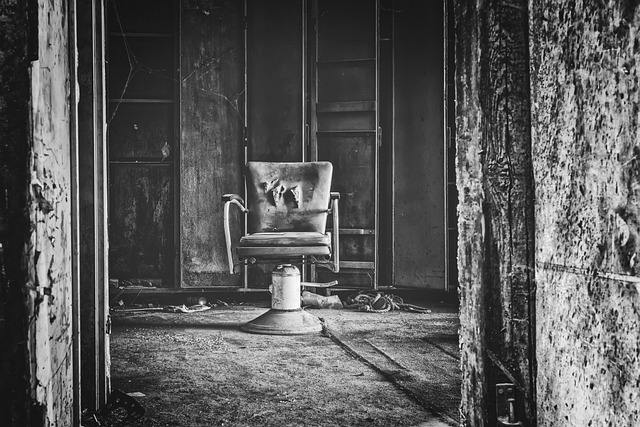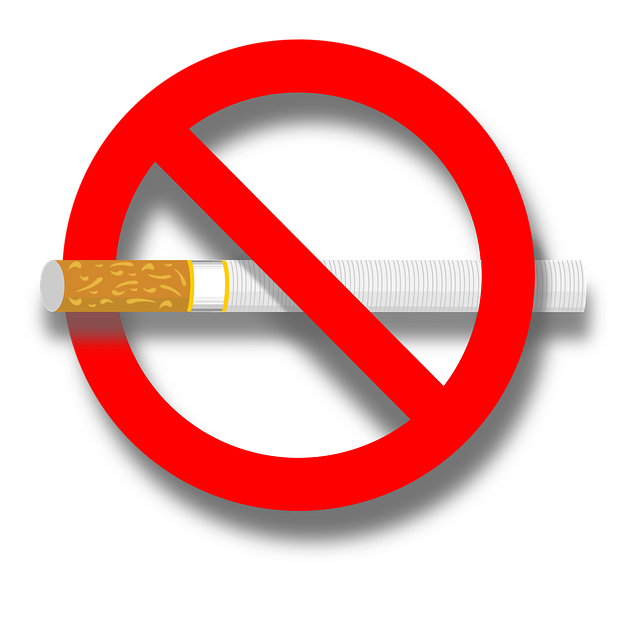Confidential Rehab for Medical Professionals: Tailored Support for Sustained Recovery
Addiction among healthcare workers is a complex issue requiring specialized support due to high-pres…….
Over 15% US adults have used prescription painkillers not prescribed to them.
In a world where health and wellness are paramount, the concept of Medical Professional Rehab has emerged as a transformative force, offering specialized care and support for individuals facing physical and mental health challenges. This article delves into the intricate world of Medical Professional Rehab, exploring its definition, global reach, economic implications, technological innovations, regulatory framework, and the impact it has on challenging lives. By understanding this field, we can appreciate its vital role in shaping healthier societies and gain insights into its potential for growth and evolution.
Medical Professional Rehab, or Medical Rehabilitation, is a multidisciplinary field that focuses on restoring physical, cognitive, and emotional function in individuals who have experienced illness, injury, or disability. It involves a comprehensive approach to healing and recovery, often extending beyond traditional medical treatments. The core components include:
Physical Therapy: Experts in this domain design tailored exercise programs to improve mobility, strength, and flexibility, aiding patients in regaining independence in their daily lives.
Occupational Therapy: This discipline assists individuals in developing or recovering skills needed for everyday tasks, fostering a sense of purpose and self-sufficiency.
Speech Therapy: Speech-language pathologists help patients improve communication abilities, swallowing functions, and cognitive skills, addressing issues arising from neurological conditions or injuries.
Psychological Support: Rehabilitation psychologists play a crucial role in managing mental health aspects, offering counseling, therapy, and strategies to cope with stress, anxiety, and depression associated with illness or injury.
Medical Management: Medical professionals oversee the overall health of patients, prescribing medications, monitoring progress, and coordinating care with other specialists involved in the rehabilitation process.
The historical roots of Medical Professional Rehab can be traced back to ancient times when healing practices focused on restoring balance and harmony within the body. However, it has evolved significantly over the past century, incorporating advanced technologies, evidence-based practices, and a holistic approach to patient care. Today, it stands as a cornerstone in the global healthcare system, offering hope and improved quality of life to countless individuals.
The influence of Medical Professional Rehab extends far beyond national borders, with consistent growth and adoption across different regions, each adapting practices to suit local needs and cultural contexts. Key trends shaping this field include:
Increasing Access: Many countries are witnessing expanded access to rehabilitation services, thanks to increased awareness, government initiatives, and the efforts of non-profit organizations. This trend ensures that more people receive the care they need, regardless of their geographical location or socio-economic status.
Technology Integration: The digital revolution has transformed Medical Professional Rehab, with technologies like virtual reality (VR), robotics, and tele-rehabilitation gaining traction. These innovations enable remote access to therapy, making it more convenient for patients and expanding the reach of rehabilitation professionals.
Personalized Medicine: There is a growing emphasis on individualized care plans, tailored to each patient’s unique needs and preferences. This shift leverages advanced assessment tools, data analytics, and artificial intelligence (AI) to optimize treatment outcomes.
Community-Based Rehabilitation: A notable trend is the movement towards community-based rehabilitation services, where treatments are provided in familiar settings like homes or local communities. This approach improves patient independence and facilitates smoother transitions from acute care to everyday life.
Collaboration and Multidisciplinarity: Global best practices highlight the importance of collaboration between various healthcare professionals, ensuring a holistic approach to patient care. Multidisciplinary teams work together to address diverse needs, enhancing overall rehabilitation outcomes.
The economic landscape of Medical Professional Rehab is dynamic and multifaceted, influenced by factors such as healthcare systems, insurance coverage, and regional variations in labor costs. Here’s a breakdown:
| Region | Market Size (Estimated 2022) | Average Cost per Patient (USD) | Key Drivers |
|---|---|---|---|
| North America | $150 billion | $30,000 – $50,000 | High insurance coverage, advanced technologies, specialized facilities |
| Europe | $200 billion | $25,000 – $40,000 | Comprehensive public healthcare systems, diverse service offerings |
| Asia-Pacific | $75 billion | $15,000 – $30,000 | Rapidly growing population, increasing awareness, government initiatives |
| Middle East & Africa | $25 billion | $20,000 – $45,000 | Oil-rich economies, expanding healthcare infrastructure |
Market Dynamics:
Investment Patterns:
Technology has been a game-changer in Medical Professional Rehab, revolutionizing treatment methods and improving patient outcomes. Notable advancements include:
Virtual Reality (VR) Therapy: VR offers immersive experiences for pain management, phobia treatment, and motor skill rehabilitation. It provides a safe, controlled environment to practice skills and face fears, enhancing motivation and engagement.
Robotic Assistive Devices: Robots are used in physical therapy to assist with exercises, provide feedback on movement, and enable patients to perform tasks in a supported manner. They offer precise movements and consistent training, aiding in motor function recovery.
Tele-Rehabilitation: Remote rehabilitation services use telecommunications technologies to deliver therapy sessions, assessments, and monitoring over distance. This approach is particularly beneficial for rural or geographically dispersed populations, ensuring continued care despite physical limitations.
Wearable Devices and Sensors: These devices track patient activity, monitor vital signs, and provide real-time feedback. They enable continuous assessment and offer valuable data to guide personalized treatment plans.
Artificial Intelligence (AI) and Machine Learning: AI algorithms analyze large datasets to predict patient outcomes, identify treatment gaps, and personalize therapy protocols. Machine learning models can adapt to individual needs, enhancing the efficiency and effectiveness of rehabilitation programs.
The regulatory environment surrounding Medical Professional Rehab varies across jurisdictions but is critical in ensuring quality care, ethical practices, and patient safety. Key policies and regulations include:
Licensing and Certification: Healthcare professionals involved in rehab must obtain licenses and certifications to practice, ensuring they meet specific educational, training, and competency standards.
Reimbursement Policies: Insurance providers and government healthcare systems have reimbursement policies that dictate how much of the cost of rehabilitation services is covered. These policies influence access and the financial burden on patients.
Privacy and Data Protection: Laws like HIPAA (Health Insurance Portability and Accountability Act) in the US or GDPR (General Data Protection Regulation) in Europe safeguard patient data, ensuring confidentiality during digital interactions.
Ethical Guidelines: Professional organizations set ethical standards for rehabilitation practices, addressing issues like informed consent, patient autonomy, and cultural competency.
Despite its many achievements, Medical Professional Rehab faces several challenges and criticisms that require thoughtful strategies for resolution. These include:
Accessibility Disparities: Unequal access to quality rehabilitation services persists due to socioeconomic factors, geographic location, and cultural barriers. Efforts must be directed towards bridging these gaps by improving infrastructure, providing financial aid, and promoting community-based programs.
Stigmatization: There remains a societal stigma associated with disabilities and mental health conditions, which can deter individuals from seeking rehabilitation support. Public awareness campaigns and educational initiatives can help dispel myths and foster understanding.
Shortage of Skilled Professionals: The demand for qualified rehabilitation professionals often exceeds the available supply, leading to longer wait times and increased workloads. Addressing this requires investment in education and training programs, along with incentives to attract and retain specialists in this field.
Cost of Care: Rehabilitation can be expensive, and out-of-pocket costs can be a significant barrier for some patients. Innovative funding models, insurance reforms, and government subsidies are necessary to make these services more affordable.
The following case studies illustrate the successful application of Medical Professional Rehab, showcasing its transformative potential:
Case Study 1: Community-Based Rehabilitation in Rural India
In a remote village in India, a non-profit organization established a community-based rehab center to address the lack of access to specialized care. The program focused on providing physical therapy, occupational training, and mental health support for individuals with various disabilities. By partnering with local communities, schools, and businesses, they created an inclusive environment where participants could regain independence and contribute to society. This initiative led to improved quality of life, increased community integration, and long-lasting positive changes for the individuals involved.
Case Study 2: VR Therapy for PTSD in Veterans (USA)
A study conducted by the US Department of Veterans Affairs implemented a virtual reality exposure therapy program for veterans with post-traumatic stress disorder (PTSD). The VR sessions were designed to expose participants to controlled, safe simulations of traumatic events, helping them process and overcome their fears. The results showed significant reductions in PTSD symptoms, improved mental health, and higher levels of functionality among the veterans who completed the program. This case highlights the potential of technology in revolutionizing mental health rehab.
Case Study 3: Robot-Assisted Rehabilitation in Stroke Patients (Japan)
Japanese researchers developed a robot-assisted rehabilitation system for stroke patients, focusing on upper limb recovery. The robotic device provided precise, repetitive movements to help patients regain motor skills and improve their ability to perform daily tasks. A clinical trial demonstrated significant improvements in arm function, grip strength, and independence in performing activities of daily living (ADLs) among the participants who received robot-assisted therapy compared to traditional physical therapy alone.
The future of Medical Professional Rehab is filled with promising possibilities, driven by technological advancements, shifting healthcare trends, and a growing recognition of rehabilitation as a vital component of comprehensive health care. Key areas for growth and strategic considerations include:
Personalized and Precision Medicine: Advancements in genomics, bioinformatics, and AI will enable tailored rehab plans based on individual genetic profiles, enhancing treatment outcomes.
Remote and Digital Health: Tele-rehab and digital health platforms will continue to expand, offering convenient access to care, especially for rural and underserved populations.
Integration of Mental and Physical Health: There is a growing recognition of the mind-body connection, leading to increased integration of mental health services within rehabilitation settings. This holistic approach addresses the complex interplay between physical and mental well-being.
Digital Therapeutic Interventions: AI-driven digital therapeutics will offer new ways to deliver evidence-based interventions for various conditions, making therapy more accessible and cost-effective.
Focus on Preventive Rehabilitation: With an aging population, there is a growing emphasis on preventive rehab to promote healthy aging, reduce disability, and improve overall quality of life.
Medical Professional Rehab stands as a beacon of hope for countless individuals facing physical and mental health challenges. Its comprehensive approach, powered by technological innovations and guided by evidence-based practices, has transformed lives and improved communities worldwide. As we look ahead, the future holds immense potential for this field, promising to revolutionize care, enhance outcomes, and foster healthier, more inclusive societies.
Q: What is the difference between medical rehab and traditional physical therapy?
A: Medical Professional Rehab (or medical rehabilitation) is a broader term that encompasses various therapeutic disciplines, including physical therapy. Traditional physical therapy focuses primarily on restoring motor function and mobility through exercises and manual techniques. In contrast, medical rehab takes a more holistic approach, addressing all aspects of an individual’s health—physical, cognitive, emotional, and social—to facilitate complete recovery and enhance overall well-being.
Q: How does technology improve rehabilitation outcomes?
A: Technology plays a pivotal role in improving rehab outcomes by providing personalized, data-driven care. Virtual reality offers immersive experiences for fear or pain management, while robotic devices provide precise movements to aid motor function recovery. Wearable sensors track patient progress and provide real-time feedback, enabling therapists to make informed adjustments to treatment plans. Additionally, AI algorithms analyze large datasets to predict outcomes and personalize therapy protocols, enhancing efficiency and effectiveness.
Q: Are there financial aids available for medical rehab?
A: Yes, various financial aid options are available depending on the region and specific circumstances. Many countries have government-funded programs that provide financial support for rehabilitation services. Non-profit organizations and charitable foundations also offer assistance to those who cannot afford private care. Additionally, insurance providers may cover a portion or all of the costs associated with medical rehab, depending on the policy and diagnosis.
Q: How can I find qualified rehabilitation professionals near me?
A: Locating qualified rehab professionals starts with consulting your healthcare provider for recommendations. You can also check with local hospitals, clinics, or community health centers, which often have partnerships with reputable rehabilitation services. Online directories and patient review platforms are valuable resources for researching and comparing different providers based on their expertise, facilities, and patient satisfaction ratings.

Addiction among healthcare workers is a complex issue requiring specialized support due to high-pres…….

Addiction among healthcare professionals, particularly doctors and nurses, is a growing concern due…….

Healthcare professionals facing addiction struggle with balancing patient care and personal challeng…….

Addiction among healthcare workers is a complex issue, exacerbated by high-stress environments and t…….

Addiction among healthcare workers is a complex issue exacerbated by high-stress environments and tr…….

Addiction among healthcare professionals is a growing concern due to demanding work schedules, high-…….

Addiction among healthcare professionals is rising due to stressful work conditions, posing a hidden…….

Addiction among healthcare workers, especially doctors and nurses, is a growing concern due to uniqu…….

Medical professional rehab programs address the unique challenges faced by healthcare workers strugg…….